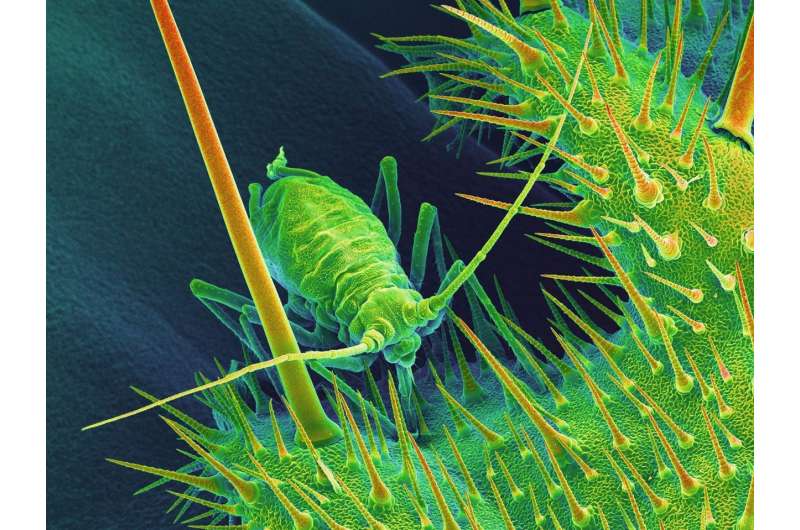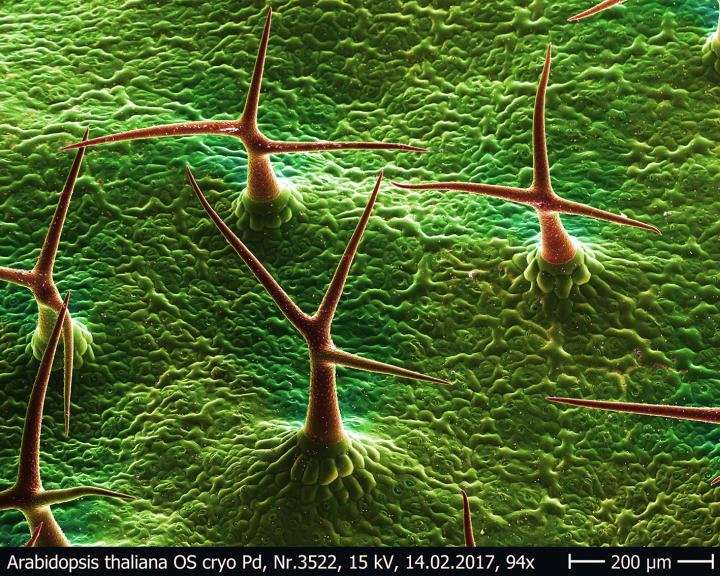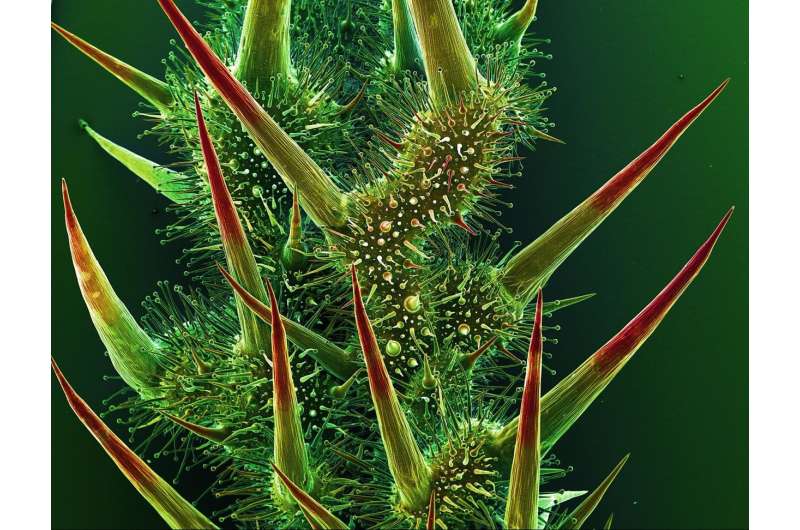Plant defense following the iron-maiden principle

Calcium phosphate is a typical component of teeth and bones. It has recently been shown that plants of the rock nettle family also use this very hard mineral in their "teeth" to defend themselves against their animal enemies. Botanists of Bonn University have now demonstrated that calcium phosphate is a lot more widespread in plants than previously suspected. Even thal cress (Arabidopsis thaliana) uses trichomes hardened with an incrustation of this biomineral to defend itself against enemies such as aphids. The results have now been published online first in the scientific journal "Planta". The print version will be published in January.
In agriculture unspectacular thal cress (Arabidopsis thaliana) is simply considered as a weed. In science, however, the plant has for decades been the modell organism in studies on genetics, molecular biology and physiology. "It is certainly the most well investigated plant of all", says Prof. Dr. Maximilian Weigend of the Nees-Institut for Plant Biodiversity of Bonn University. "The more surprising, that calcium phosphate in the tips of the trichomes of Arabidopsis was discovered only now." The team around Prof. Weigend identified the hard-as-teeth substance with the help of the electron microskope and Raman-spectroscopy.
The fact that "teeth" are not restricted to animals, but also found in plants, had been previously demonstrated by the Bonn botanists with the help of Hans-Jürgen Ensikat in the rock nettle family (Losaceae). Subsequently, the scientists expanded their studies onto various other plant orders. They could demonstrate the presence of calcium phosphate biomineralization in several dozens plant species, e.g., the orders Rosales, Boraginales and Brassicales - thal cress belongs to the latter.

Deceptively soft hairs are sharp weapons
"It has long been known that many plants use glass-like silica or calcium carbonate to stiffen their trichomes", reports Adeel Mustafa of the Weigend working group. "The surprising thing was that very hard calcium phosphate is also used by a whole range of species and has yet been overlooked completely until recently." However, thal cress lacks spectacular spines or stinging hairs like stinging nettles - that use them to defend themselves against browsing mammals such as cows. In Arabidopsis the trichomes are small and comparatively soft - only the tiny tips are incrusted with the particularly hard substance calcium phosphate. "The biomineral is apparently deposited in precisely the place where maximum mechanical stability is required", explains Weigend.

Microscopic image shows impaled aphids
Thal cress uses its hairs to defend itself mostly against small insects such as aphids. Microscopic images demonstrate how the mineralized trichomes represent unsurmountable obstacle. Like an iron maiden, the medieval instrument of torture, the particularly hardened hairs impale the aphids. "We are dealing with a microscale defense weapon, deterring many types of insects from damaging these plants", says Weigend.
"In some way it is surprising that not all plants use calcium phosphate in structural biomineralization," concludes Mustafa. Calcium and phosphate are nearly universally present in plants in the form of other chemical compounds, but the use as a biomineral is not universal. Silica and calcium phosphate are far superior to calcium carbonate - the most common biomineral overall - due to their much higher hardness. The ability to harden hairs with calcium phosphate appears to have a genetic basis. Weigend outlines possible future search topics: "Unravelling the genetic basis for the productions of these defense weapons would be the next logical step. This would enable us to use these self-defending plants as models for breeding more insect resistant crops."
More information: Maximilian Weigend et al, Calcium phosphate in plant trichomes: the overlooked biomineral, Planta (2017). DOI: 10.1007/s00425-017-2826-1
Provided by University of Bonn





















